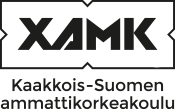Basics of engineering chemistry and physics (5 cr)
Code: EE00CX22-3003
General information
Enrollment
15.08.2019 - 30.08.2019
Timing
26.08.2019 - 31.12.2019
Number of ECTS credits allocated
5 op
Mode of delivery
Contact teaching
Campus
Mikkeli Campus
Teaching languages
- Finnish
Degree programmes
- Degree Programme in Environmental Engineering
Teachers
- Marjatta Lehesvaara
- Reijo Vuohelainen
Teacher in charge
Marjatta Lehesvaara
Scheduling groups
- Ryhmä A (Size: 0. Open UAS: 0.)
- Ryhmä B (Size: 0. Open UAS: 0.)
Groups
-
EEMI19SPEnvironmental Engineering, full-time studies
Small groups
Objective
You know the atomic structure and chemical bonds. You are able to describe and identify the common inorganic compounds as well as the groups and structures of organic compounds. You can write basic chemical equations, solve problems dealing with solutions, gases, pH, and amounts of substances needed for reactions. You master the basic principles of laboratory work. You can apply theoretical knowledge into practice and write a report on experiments.
You can solve kinematic problems with Newtonian mechanics and with the energy principle. You learn to calculate collisions, and you understand what the conservation of energy, linear momentum and angular momentum mean in daily life.
Content
What are the basic chemical quantities, units, definitions and natural laws? How is matter constructed? What happens when a chemical reaction occurs? How are chemical compounds divided into groups and how are they named? What are the properties of chemical substances?
How can you predict how objects move?
Does the car stop before the pedestrian on the road?
What is a closed system and how is the energy conservation principle used to solve problems?
Materials
Information about learning materials is given at the beginning of the course.
Study materials are teacher-provided handouts and electronic material in Moodle.
Teaching methods
Scheduled track:
The course consists of lectures, exercises and practical laboratory work.
In addition, students are required to complete homework assignments.
Exam schedules
The failed exam can be resit twice
Student workload
Chemistry:Lectures and exercises 16 h, practical laboratory work 8 h and student's independent work 44 h
Physics: Lectures and exercises 16 h, practical laboratory work 8 h and student's independent work 44 h
Further information
The course is successfully completed when the exams and the laboratory works have been completed successfully.
Laboratory measurements are made in groups of three-four students.
Evaluation scale
1-5
Assessment methods and criteria
Chemistry: Exam and laboratory reports
Physics: Exam and laboratory reports
Assessment criteria, good (3-4)
Based on entry-level know-how and skills students can
- use professional vocabulary systematically.
- identify interrelated tasks.
- use the key models, methods, software and techniques of the professional field.
